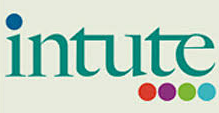Fandoms – Youtubers, case study: Julián Serrano
DOI:
https://doi.org/10.24215/16696581e256Keywords:
fandoms, youtubers, empowerment, content, SerranoAbstract
This article focuses on the youtubers fandoms. The new fans have the unique characteristic that, even by the very nature of their idols, they express themselves in the field of the network through messages that are posted in their various platforms. At the same time, youtubers are in general males in their twenties who post their own audiovisual products in the framework of YouTube in an implicit or explicit dialogue with their followers. In order to delimit the object of study it was decided to focus attention on the followers of the Argentine youtuber Julián Serrano, who in July 2017 had 2,500,000 subscribers to his channel. The theoretical framework used is based on the research carried out in the 90s by Lewis and Jenkins, which modified the marginal place that was previously given to the fandoms in the audiences studies, placing them in a leading role and to a certain extent autonomous with respect to their own idols. The data obtained corroborated the assumptions of both authors valid also for Latin American scenario.
The used techniques were bibliographic and documentary review, text analysis and on-screen observation following ethnographic guidelines.
Downloads
References
digital fandom. Journal of Fandoms Studies, volume 2 number 1. Recuperado agosto 2017
http://williamwolff.org/wp-content/uploads/2015/01/lbennett_1-libre.pdf
Bernardazzi, R.(2016)Youtubers e as relações com a produção audiovisual. XXXIX Congresso Brasileiro de Ciências da Comunicação, São Paulo (Brasil). Recuperado agostol 2017
http://portalintercom.org.br/anais/nacional2016/resumos/R11-1857-1.pdf
Bonaga, C., Turiel, H (2016) Mamá, ¡quiero ser youtuber!, Barcelona: Planeta
Bravo M. (2015) Julián Serrano y Sabrina Roos, Blog. Recuperado agosto 2017
https://www.facebook.com/JuliianSerranoYSabriinaRoos/posts/1057279917630133
Cabanillas, S. (2014) El fenómeno youtuber: una nueva forma de comunicación. Trabajo de Grado. Universidad Autónoma de Barcelona. Recuperado octubre 2017
http://ddd.uab.cat/record/126575
Ehrenreich, B., Hess, E., Jacobs, G. (2012) Beatlemania: Girls Just Want to Have Fun,
en Lewis, L. The Adoring Audience. Fan Culture and Popular Media. London: Routledge.
Facebook (2013) Serranistas. Recuperado agosto 2017
https://www.facebook.com/permalink.php?id=117937181580435&story_fbid=683266865047461
Feria del Libro (2016) Web Firma #Chupaelperro. Recuperado en agosto 2017
http://www.el-libro.org.ar/firma-chupaelperro/
Grossberg L. (1992) Is there a fan in the house? The Affective Sensibility of Fandom,
en Lewis, L. The Adoring Audience. Fan Culture and Popular Media. London: Routledge.
Hine, C. (2000), Virtual Ethnography, Sage.
---------- (2005), Virtual Methods, Oxford, Berg Publishers.
Jenkins, H. (1992) Textual Poachers. Television Fans & Participatory Culture. New York: Routledge
Lacorte N., Murolo, N (2015) De los bloopers a los youtubers. Diez años de youtube en la cultura digital. Revista Questión Vol. 1, No 45 (enero-marzo)
Lewis.L (1992) The Adoring Audience. Fan Culture and Popular Media. London & New York: Routledge.
Moreno, D. (2013) Julián Serrano, el ídolo teen al que le gusta provocar, en La Nación, 14 de noviembre de 2013. Recuperado julio 2017
http://www.lanacion.com.ar/1637605-julian-serrano-el-paranaense-que-gracias-a-youtube-llego-a-la-ciudad
Serrano, J. (2016) Blog. Recuperado setiembre 2017 http://la.eonline.com/experience/celebrity_2016/
Stiletano, M. (2015) Julián Serrano, un youtuber en escena, en La Nación, 23 de julio de 2015
Recuperado julio 2017 http://www.lanacion.com.ar/1812642-julian-serrano-un-youtuber-en-concierto
Twitter (2013) @Jota Esse Official. Recuperado agosto 2017 https://twitter.com/JotaEsseOF
Yahoo! Respuestas (s/d) Recuperado en agosto 2017 https://es.answers.yahoo.com/question/index?qid=20111226151059AAoiOw4
Downloads
Published
How to Cite
Issue
Section
License
La aceptación de un original por parte de la revista implica la cesión no exclusiva de los derechos patrimoniales de los/as autores/as en favor del editor, quien permite la reutilización, luego de su edición (postprint), bajo una Licencia Creative Commons Atribución-NoComercial-CompartirIgual 4.0 Internacional (CC BY-NC-SA 4.0)
Acorde a estos términos, el material se puede compartir (copiar y redistribuir en cualquier medio o formato) y adaptar (remezclar, transformar y crear a partir del material otra obra), siempre que a) se cite la autoría y la fuente original de su publicación (revista y URL de la obra), b) no se use para fines comerciales y c) se mantengan los mismos términos de la licencia.
La cesión de derechos no exclusivos implica que luego de su edición (postprint) en Question las/os autoras/es pueden publicar su trabajo en cualquier idioma, medio y formato; en tales casos, se solicita que se consigne que el material fue publicado originalmente en esta revista.
Tal cesión supone, también, la autorización de los/as autores/as para que el trabajo sea cosechado por SEDICI, el repositorio institucional de la Universidad Nacional de La Plata, y sea difundido en las bases de datos que el equipo editorial considere adecuadas para incrementar la visibilidad de la publicación y de sus autores/as.
Asimismo, la revista incentiva a las/os autoras/es para que luego de su publicación en Question depositen sus producciones en otros repositorios institucionales y temáticos, bajo el principio de que ofrecer a la sociedad la producción científica y académica sin restricciones contribuye a un mayor intercambio del conocimiento global.















































